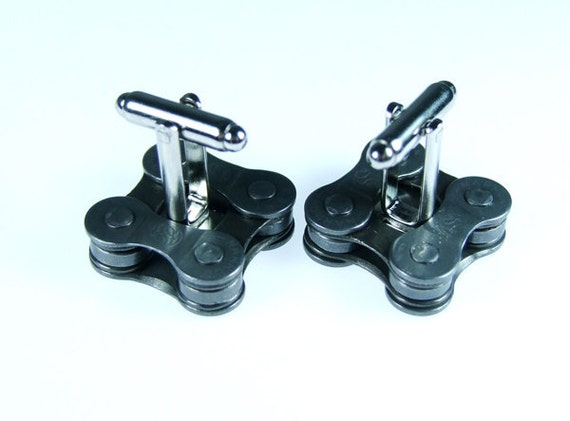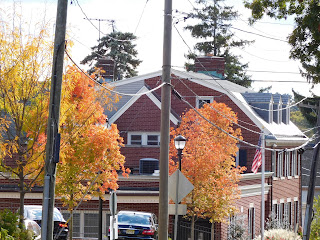I love Brooks saddles--at least, certain models. (I don't think anyone can love all of the saddles that any company makes!) I like their bar wrap, and their traditional seat bags look nice, too.
However, sometimes it seems that they're turning into a fashion-accessory company. I mean, it's one thing to offer stylish saddlebags, panniers and other luggage that attaches to bikes. I even think it's fine that they're offering backpacks and messenger bags: They look nice, but I doubt I'll ever buy them because I hardly ever use such bags anymore.
But I have to wonder when Brooks England (the name of the company) offers ladies' and gents' "cycling jackets" that look--and are priced--more like trench coats or safari jackets from Brooks Brothers. How many cyclists are going to buy something like that?
Then again, BE might be trying to develop non-cycling customers. After all, we tend not to replace our Brooks Professionals or B17s very often!
If Brooks England really wants to become the world's first bicycle fashion house, it should consider offering things like these:
What's more of a "gents'" accessory than cufflinks? (I had four pairs of cufflinks, all of which were gifts. I never wore any of them. Perhaps that's proof I was never a "gent".)
The part of me that still loves the Sex Pistols wants to see those cufflinks made from the dirtiest, greasiest chains and used on the most pristine white shirts. That's the sort of thing that, perhaps, a guy would wear if he'd just won the Lotto jackpot and was going to tell his boss what he really thought of the job and company.
Now, here's something Brooks could make for the ladies:
To make this "blossom" pendant, individual chain links were disassembled and the parts cleaned and anodized. It's offered in a number of different main and accent colors, and with several different lengths of chain.
However, sometimes it seems that they're turning into a fashion-accessory company. I mean, it's one thing to offer stylish saddlebags, panniers and other luggage that attaches to bikes. I even think it's fine that they're offering backpacks and messenger bags: They look nice, but I doubt I'll ever buy them because I hardly ever use such bags anymore.
But I have to wonder when Brooks England (the name of the company) offers ladies' and gents' "cycling jackets" that look--and are priced--more like trench coats or safari jackets from Brooks Brothers. How many cyclists are going to buy something like that?
Then again, BE might be trying to develop non-cycling customers. After all, we tend not to replace our Brooks Professionals or B17s very often!
If Brooks England really wants to become the world's first bicycle fashion house, it should consider offering things like these:
 |
| From Voochee |
What's more of a "gents'" accessory than cufflinks? (I had four pairs of cufflinks, all of which were gifts. I never wore any of them. Perhaps that's proof I was never a "gent".)
The part of me that still loves the Sex Pistols wants to see those cufflinks made from the dirtiest, greasiest chains and used on the most pristine white shirts. That's the sort of thing that, perhaps, a guy would wear if he'd just won the Lotto jackpot and was going to tell his boss what he really thought of the job and company.
Now, here's something Brooks could make for the ladies:
| From Chainspirations |
To make this "blossom" pendant, individual chain links were disassembled and the parts cleaned and anodized. It's offered in a number of different main and accent colors, and with several different lengths of chain.
We've all seen bracelets made from lengths of bicycle chain. For a time, it seemed as if every bike shop employee wore them. Here's an interesting take on them:
 |
| From Winterwomandesigns |
From a meter or two away, it looks like butterflies. And butterflies rank right up there with cats and dolphins for my favorite animal motifs.
Somehow, I think it's tasteful enough even for John Boultbee--or a woman or girl in his life, anyway.



























